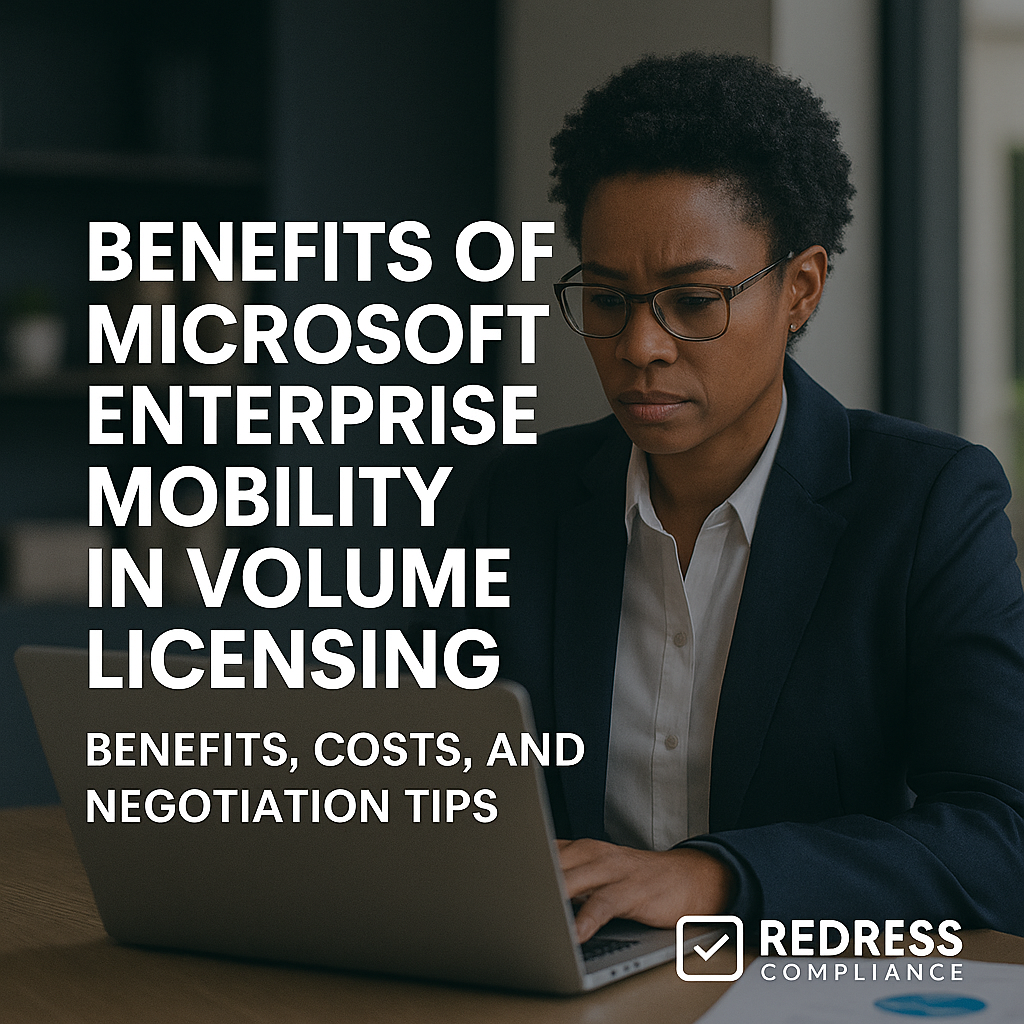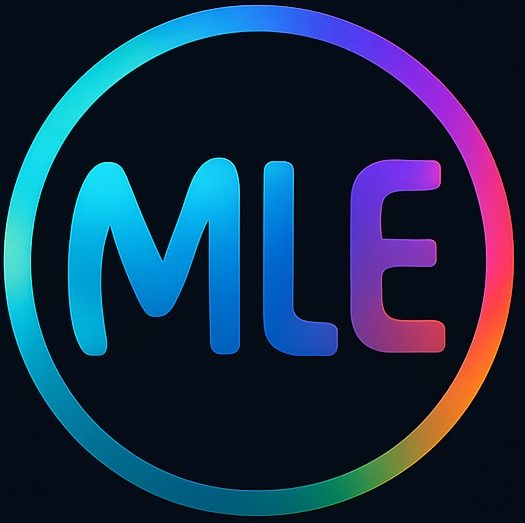
Introduction – Why Microsoft Enterprise Mobility Benefits Matter in 2025
In 2025, Microsoft Enterprise Mobility + Security (EMS) is central to enterprise security, compliance, and device management. As cloud and remote work expand, understanding EMS benefits in volume licensing is crucial to maximize protection without overspending on security licensing.
Microsoft will often push its all-encompassing E5 packages, but not every organization needs every feature.
A savvy approach is to evaluate EMS on its own merits and license it in a way that fits your actual needs.
In this article, we explore the key benefits of EMS in volume licensing and how to negotiate those advantages into your agreement.
Key Benefits of Microsoft Enterprise Mobility in Volume Licensing
Simplified Security Licensing with EMS Suites
EMS bundles a range of security and management tools (Azure AD Premium (now part of Microsoft Entra ID), Intune, Azure Information Protection, etc.) under one license. This one-stop suite is easier to manage than multiple standalone add-ons, ensuring all users receive a consistent set of security capabilities without license complexity. It also means fewer vendor contracts to juggle, because one EMS suite replaces numerous point solutions.
Cost Savings from Bundled Licensing
Buying EMS as a bundle is often cheaper than purchasing each component separately. Microsoft’s volume licensing prices for EMS E3/E5 are lower per user than the sum of individual licenses you would otherwise need to buy.
In short, a single EMS subscription can significantly reduce your overall security licensing costs while even covering some hybrid mobility licensing needs (for example, EMS E3 includes a Windows Server license for on-prem access).
For instance, some enterprises find that an EMS E5 suite is nearly 50% cheaper than buying its equivalent features one by one.
Integration with Microsoft 365 Licensing
EMS integrates tightly with Microsoft 365. If you opt for a Microsoft 365 E5 plan, it already includes EMS E5 features alongside Office and Windows. However, you don’t need to upgrade everyone to E5 just to get EMS.
Many organizations choose Microsoft 365 E3 for most users (which includes EMS E3) and then license EMS E5 only for high-need users. This targeted approach leverages EMS’s integration without paying for full E5 licenses company-wide.
Flexibility Across Licensing Programs
EMS is available through various volume licensing programs, allowing you to choose the model that fits your needs:
- Enterprise Agreement (EA) – A 3-year contract for large enterprises, offering the best volume discounts and locked-in pricing for EMS. Great for predictable budgets and organization-wide deployments.
- MPSA (Microsoft Products & Services Agreement) – A transactional volume licensing agreement with no long-term commitment. You can buy EMS licenses as needed and still get volume pricing, useful if you want flexibility without an EA.
- CSP – A Cloud Solution Provider subscription, paid per user per month. It offers ultimate flexibility to add or remove EMS licenses on the fly, ideal for small-scale rollouts or fluctuating user counts (though per-unit costs may be slightly higher than an EA).
These options mean you can mix and match licensing strategies. For instance, keep core users under an EA for cost efficiency, but use CSP for a pilot program or a newly acquired subsidiary.
The ability to license EMS through different channels is an Enterprise Mobility licensing advantage that lets you balance cost savings against flexibility.
Compliance and Audit Benefits
EMS licensing also brings compliance benefits and audit advantages. The suite’s features help meet regulatory requirements—Azure AD’s conditional access and multi-factor authentication support zero-trust policies, and Azure Information
Protection helps protect sensitive data in line with GDPR, ISO, and other standards. By deploying EMS broadly, you ensure security controls and policies are consistently applied across all users, which simplifies compliance audits and reporting.
Having EMS enterprise-wide simplifies software licensing audits. Instead of tracking many individual security product licenses, one EMS agreement covers all included tools, reducing the risk of any licensing gaps.
For instance, if you activate a feature like conditional access or mobile device management across the company, you can be confident every user is properly licensed through EMS rather than worrying about who has which add-on.
This not only avoids compliance penalties but also strengthens your organization’s security posture across the board.
(Tip: When negotiating, highlight how EMS will replace other security solutions or lower compliance risks. Showing that EMS adoption can save money elsewhere or prevent costly breaches can bolster your case for better pricing.)
Negotiation Strategies for EMS in Microsoft EA
When adding EMS to a Microsoft Enterprise Agreement, be strategic. Microsoft often pushes its premium bundles, but you can use EMS as a bargaining chip to get a fair deal. Consider these tactics:
Benchmark EMS E3 vs E5 Needs
Not everyone needs the top-tier E5 features. Identify which roles truly require EMS E5’s advanced capabilities and which can use EMS E3. Negotiate a mix of E3 and E5 licenses accordingly to avoid paying E5 prices for users who won’t use those extras.
For example, EMS E5 can cost around 50–70% more per user than E3—so limit E5 licensing to those who genuinely need its premium features.
Push for Security Add-On Discounts
If Microsoft tries to upsell EMS or an all-E5 bundle, use it as leverage. Only agree to add it if it comes with a significant discount or extra value. For example, insist on a lower price per user or included support services in exchange for adopting more EMS. In short, don’t accept an upsell without getting something in return.
Also, be mindful of timing — Microsoft sales reps often offer better discounts as quarter-end or year-end approaches. Try to schedule your final EMS negotiations during these periods to take advantage of their urgency to close deals.
Align EMS with Other Commitments
Link EMS with your other Microsoft plans. If you’re ramping up Azure or adding more Microsoft 365 services, let Microsoft know EMS is part of that bigger picture. A combined deal makes them more flexible, so ask for better EMS pricing or perks as part of the package.
For example, you might commit to deploy EMS company-wide if Microsoft knocks, say, 15% off its price. Also consider requesting onboarding help (FastTrack or partner services) to ensure a smooth EMS rollout—Microsoft may include that at no charge to secure your agreement.
Lock in Pricing and Flexibility
Ensure your EMS pricing is locked for the full term, and try to cap any price increases at renewal. For example, any new EMS licenses added mid-term should use the same negotiated price, and renewal rates shouldn’t rise beyond a minimal percentage.
Standard EAs don’t allow reducing licenses mid-term, but you can attempt to negotiate a bit of flexibility. For instance, ask for a clause to let you decrease or downgrade a certain number of EMS licenses if your needs drop.
Even a limited true-down option can protect you if your user count falls or not everyone needs the top-tier features.
FAQ – Microsoft Enterprise Mobility Benefits
Q1: What does EMS include in a volume license?
A: EMS is a bundle of Microsoft security and management tools under one license. It includes services like Azure AD Premium for identity management, Microsoft Intune for device management, and various data protection and threat protection features (with EMS E5 adding the most advanced capabilities).
Q2: Is EMS cheaper through an EA than through CSP?
A: Generally, yes. An Enterprise Agreement offers EMS at volume-discounted rates that are usually lower per user than CSP’s monthly pricing. CSP is flexible but tends to cost more per user if you have a large number of seats.
Q3: Can we buy EMS separately from Microsoft 365?
A: Yes. You can purchase EMS on its own through volume licensing. Many companies simply add EMS E3 or E5 to their existing Office 365 subscriptions to get security and mobility features, instead of upgrading every user to Microsoft 365 E5.
Q4: What’s the difference between EMS E3 and E5?
A: EMS E3 provides the basic identity (Azure AD Premium P1), device management (Intune), and security features. EMS E5 includes everything in E3 and adds more — for example, Azure AD Premium P2 for deeper identity safeguards and added threat protection.
Q5: How can I negotiate EMS discounts in an EA?
A: Leverage volume and bundling. Request discounts by committing to a broad EMS deployment or tying it with other Microsoft investments (like Azure). If Microsoft tries to upsell EMS, insist on a better price or added benefits before agreeing.
